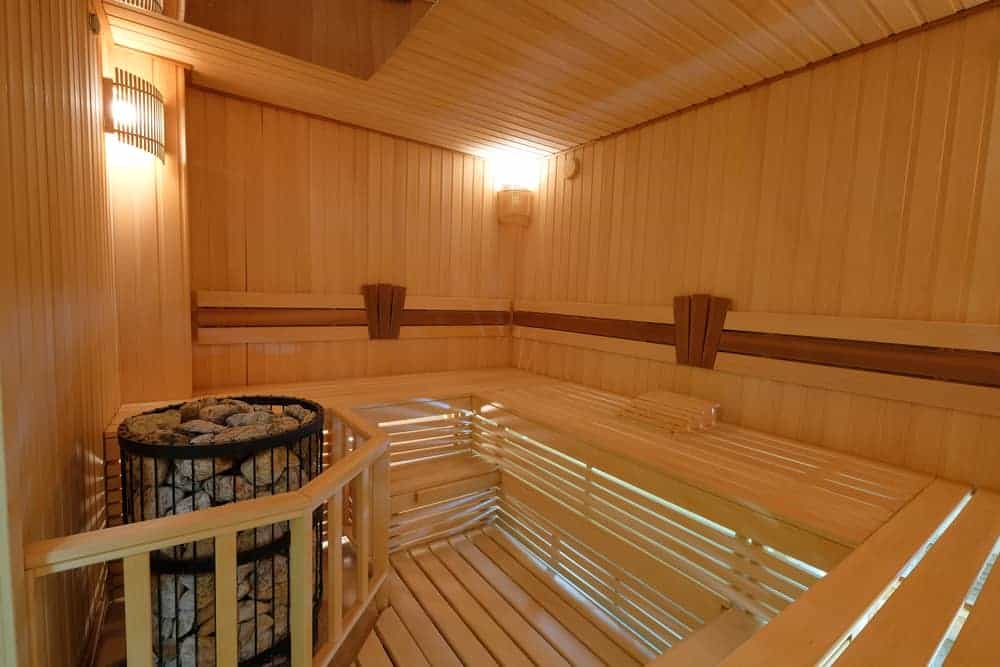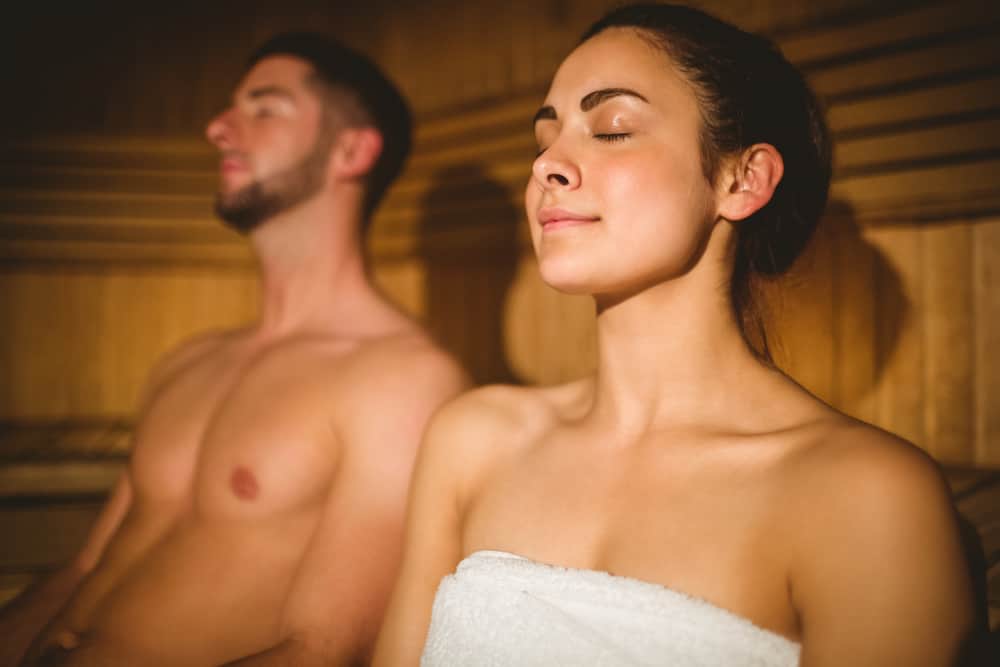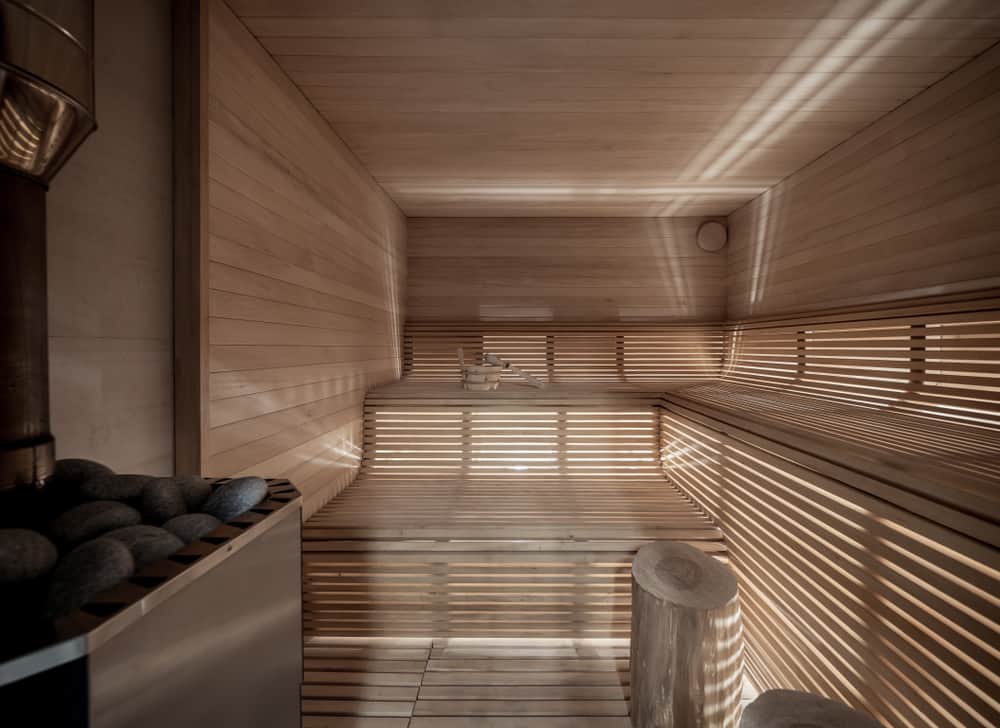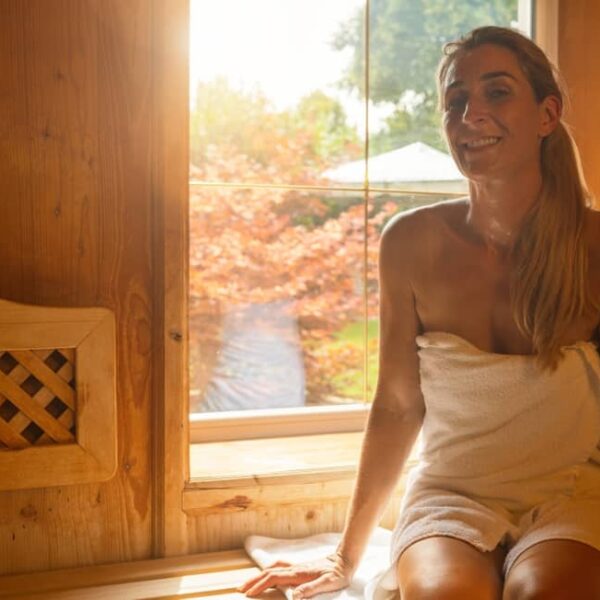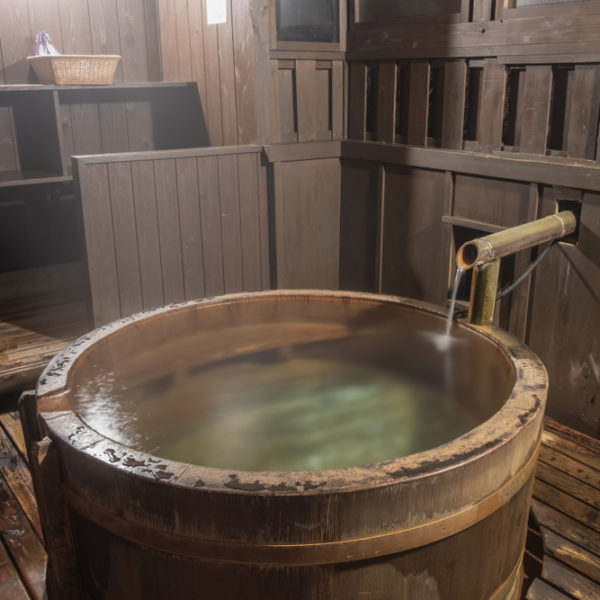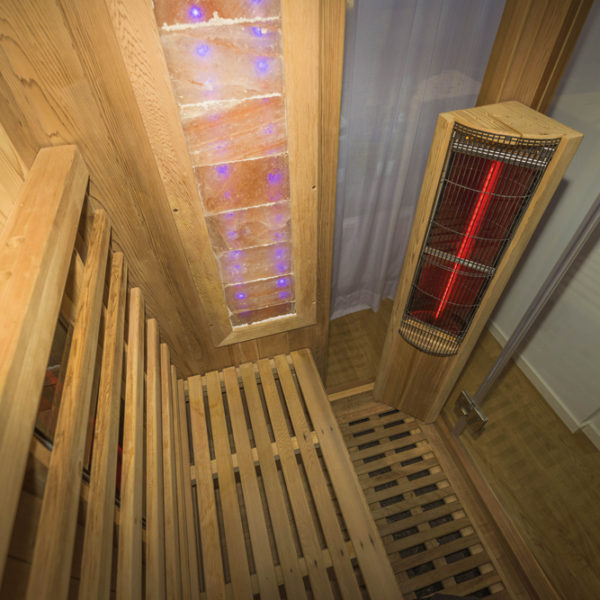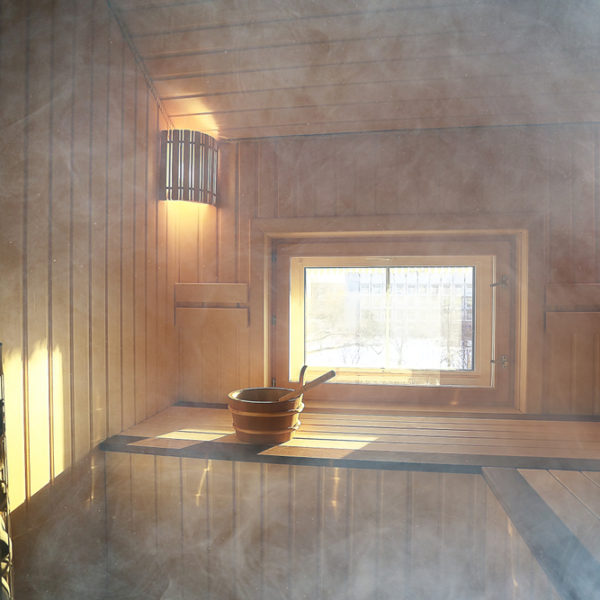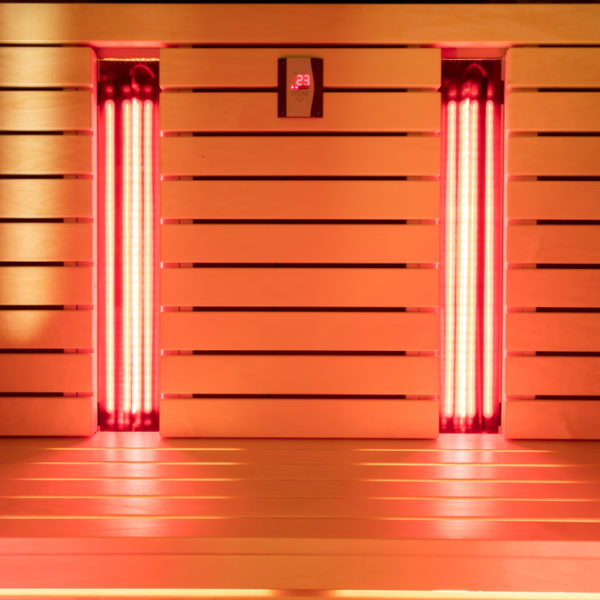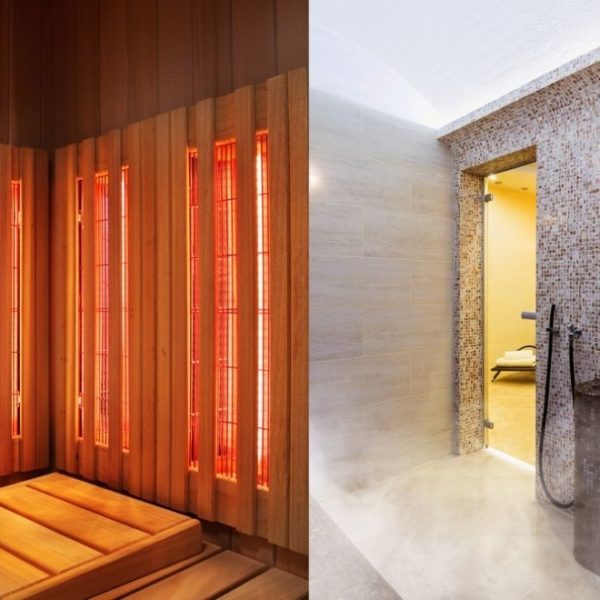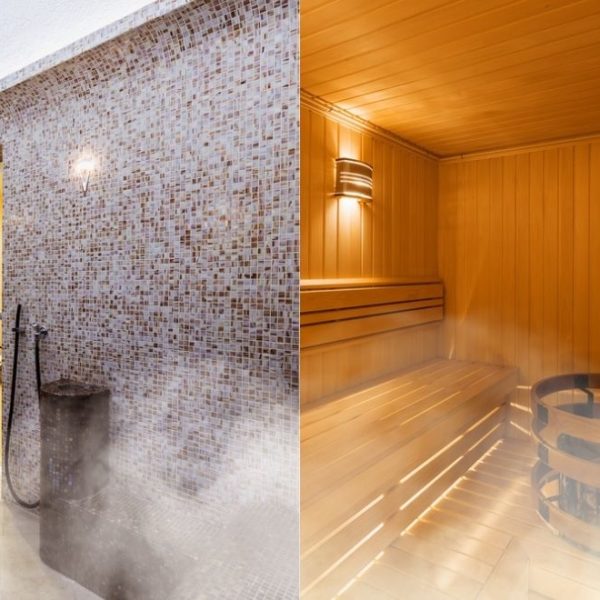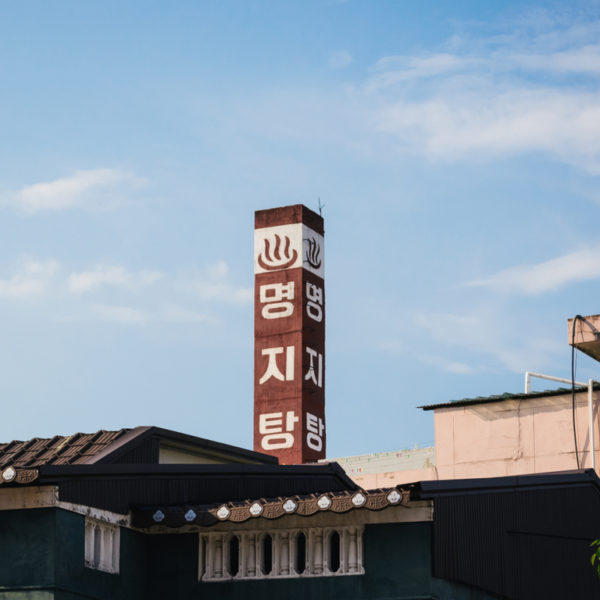Many of us love relaxing with a session in a sauna. Whether it’s lying on a bench at a spa, or wrapping ourselves in a sauna blanket, it’s a great way to unwind.
But did you know that there are lots of different kinds of saunas? And that one of the oldest traditions originates in Germany?
We’ve sweated out 17 facts about a German sauna to tell you everything you need to know. So sip some water, put on your bathrobe, and prepare to find out more …
German Sauna Facts
1. The tradition dates back to the Romans
What have the Romans done for us? Well, they’re thought to have brought the idea of the sauna to Germany!
The mineral baths of the Roman empire were places to relax and socialize. They were often used by soldiers returning to their homeland from the battlefields of Europe.
The Roman example shaped the tradition of spas in Germany. And In the eighteenth century, it was common for whole families to visit the sauna together. People even took their dogs!
Today, the combination of saunas and mineral springs is seen in towns all over the country.
2. The Second World War spread the sauna tradition
Although saunas date back to Roman times, it wasn’t until the Second World War that they became widespread in Germany. The custom was spread by German soldiers who had been fighting with the Finns against the Soviet Union.
Finland is the cultural home of the sauna, and for Finns, taking a sauna is an essential part of everyday life. Having experienced the saunas of their Finnish counterparts, the returning German soldiers brought the practice back to their homeland.
3. You can get a sauna on prescription
Germany’s public health system is one of the most advanced in the world. And Germans suffering from certain conditions can get themselves prescribed a spa break as part of the package.
Depending on the details of their insurance, they can take a break for three weeks every three years. Spa breaks can be taken to help delay the onset of new medical conditions, or minimize the effects of existing ones. They’re also used to treat chronic ailments, such as muscular dystrophy.
4. There are spa towns all over Germany
Because spas are seen as so important, there are formally designated spa towns across Germany. In order to be accredited, towns have to meet strict standards for air and water quality. And they also have to have the right infrastructure and staff to create the perfect spa experience.
Towns that qualify can use the prefix “Bad” in front of their name. Here Bad is good – it means “bath”, and indicates they’re spa resorts.
5. It’s all about the Aufguss
Once you’re in a German sauna, there are certain rituals that might take you by surprise. One of these is the “Aufguss”.
This usually lasts for about 15 minutes. In larger saunas, it’s often scheduled to take place once an hour. The ritual is led by the saunameister, the Sauna Master.
German saunas, like Finnish and Russian ones, involve pouring water over the coals of the stove every so often. This results in steam, making the air hotter and more humid, and causing sauna users to sweat more profusely.
During the Aufguss, the Sauna Master will use water infused with fragrant oils to create the steam. They will then intensify the experience by twirling a towel around their head. This sends waves of hot air circulating around the sauna.
The whole performance is intensely theatrical, with much flicking and whipping of the towel. It’s not to be missed! But don’t try to do it yourself. Pouring water on the coals and “throwing steam” is seen as strictly the role of the Sauna Master.
And try not to leave the sauna whilst the Aufguss is in process. People will be irritated with you for letting out the steam.
6. Go naked or go home
The Germans are sticklers for nudity in their saunas. In some cases, there are separate sauna sessions for men and women. But often it’s a unisex experience, and is considered completely normal.
In many public saunas, in fact, wearing swimming costumes in the sauna is prohibited. You are, however, expected to take a towel and sit on it.
There are a couple of reasons for this. If you’ve been wearing your swimming costume for its intended purpose, it’s likely to be wet. Dripping water all over the sauna makes for a less comfortable environment. And it may also cause the wooden benches to develop mold.
There’s also the risk that your swimming costume may have chlorine on its fibers from the pool water. If so, the heat of the sauna risks the chemical evaporating. That can be very dangerous for any users with allergies or asthma.
So embrace the naked sauna! After a few minutes of mild discomfort, you’ll probably be wondering what you were worried about. If you really can’t face going au naturel, you can wrap yourself in a towel instead.
7. The changing rooms are unisex
Getting used to seeing lots of naked bodies starts in the changing rooms. And in most German spas and saunas, these are unisex environments. In some cases, separate family changing rooms are available too.
There are lots of individual cubicles to escape to as you acclimatize to the sight of all that flesh. But be prepared for the more relaxed Germans preferring to disrobe in the communal area.
Don’t worry, though, there are some single-sex areas. You’ll find separate showers and toilets for men and women.
8. Different saunas have different temperatures
Many German spas will feature what’s known as saunawelt – sauna world. This comprises a whole series of different saunas, sometimes as many as twenty, all set to different temperatures.
You can choose to start with a sauna set to a lower temperature and progress to a higher one. Or just stick with whatever level of heat you find most comfortable.
Most spas will offer at least three different saunas.
The Alte Finnische – the Old Finnish Spa – is the hottest, and will be set to a temperature of 176 degrees Fahrenheit. Then there’s the Kräutersauna, where the air is infused with essential oils or herbs. The temperature here is a cooler 140 degrees.
Last but not least is the steam room, known as the Damfsauna. This will be cool enough for the water vapor from the coals to form visible steam. But because it’s very humid, your sweat won’t evaporate as quickly. That can mean it feels hotter than saunas with higher air temperatures.
9. Take a big bag to the sauna
If you want to fit in with the locals at a German sauna, take a large bag with you! You’ll need it to carry the numerous sauna accessories most Germans can’t do without.
These include a bathrobe and several towels, toweling slippers, shampoo, and something to eat and to read. It’s not uncommon to see German spa goers entering the premises with a trolley case!
10. Take plenty of towels
You’ll need at least one big towel to take into the sauna – and two if you want to wrap yourself up. It’s a key part of German sauna etiquette to avoid any part of your skin touching the wooden benches. That includes your feet!
It’s also common for people using a sauna to lie on the benches. If you want to do that, make sure your towel is big enough. If the sauna is busy, though, you might need to stick with sitting down.
11. They’re quiet places
In Finland, where there’s a strong sauna culture, saunas are places for socializing. Groups of friends will often visit the sauna together, and use it as an opportunity to catch up.
That’s not the case in Germany. Here, the sauna is known as a Ruhezone – a quiet place. Any chit chat when you’re inside is frowned upon.
12. Fifteen minutes of heat
German saunas usually feature a sauna timer. This is just like an hour glass, except that it takes 15 minutes for the sands to run through.
For most Germans, it’s normal practice to sit in the sauna for the full 15 minutes. But don’t feel you need to do this. The most important thing is to listen to your body. If you’re finding the heat uncomfortable, don’t feel you need to stick it out. You could make yourself unwell.
13. Relaxation doesn’t stop at the sauna
It’s customary to take a dip in cold water after a German sauna. Many people repeat the cycle, sometimes spending all day at the spa!
When you’ve finished, most public saunas will have an area with seating and couches for you to relax on. This is a good place to read and enjoy some downtime.
Food and drink may be served too. Most saunas will have a restaurant, or at least a place to get snacks.
And if you’ve been given a wristband on entry, you may be able to use this to record what you’ve bought. You can then pay before you leave, once you’ve collected your belongings. It’s much easier than having to carry your wallet or purse around with you.
14. You can find German saunas outside Germany
While both the Romans and the Finns played a part in bringing saunas to Germany, Germans have also spread their own distinctive sauna culture around the world.
Today, you can find German-style saunas in Austria, Switzerland, Belgium, Luxembourg and the Netherlands.
15. Germany holds the record for the largest public sauna
We’re used to thinking of saunas as relatively small spaces, but that needn’t be the case. According to the Guinness Book of Records, the world’s largest sauna can be found in Germany.
You’ll find it at the Thermen & Badewelt in the town of Sinsheim. The complex is home to a number of different saunas, but the largest is the spectacular Koi Sauna. This gets its name from the windows, through which you can see a pond filled with dazzling koi carp.
In keeping with the koi, this is actually a Japanese themed sauna! The Sauna Master wears a kimono and uses a large oriental fan, rather than a towel, to swirl the hot air around.
The sauna has an area of 1,794 square feet, and can accommodate up to 150 users at once.
16. You can combine your sauna with other activities
Germany is home to some truly distinctive saunas. Some of these allow you to combine other activities with the sauna experience.
A sauna outside Munich, for example, also incorporates a planetarium. If you’ve ever wanted to sweat profusely whilst admiring the night sky, this is your chance!
In Bäden-Wurttemberg, you can find a sauna combined with a cinema. We’re not entirely sure how this works – maybe the films are all 15 minutes long?! And the same complex also features a tropical sauna, with views of beautiful rare birds from the windows.
17. Just don’t stare!
We’ve already seen that getting nude in the sauna is pretty much obligatory in Germany. A towel is borderline acceptable, but wearing a swimming costume is considered highly unhygienic.
The good news is that the light inside the sauna is usually dimmed. And staring is considered the height of bad manners. Anyone caught ogling another patron can expect to be the subject of a public tongue lashing.
You have been warned!
Ready to brave a German sauna?
That brings us to the end of our look at 17 facts about a German sauna!
Whilst the idea of getting naked in public can take some getting used to, for Germans it’s all perfectly natural. If you’re visiting a German spa, it’s best to go with it. Swimming costumes are usually forbidden in saunas, and you’ll be told off if you attempt to flout the rules.
So try to abandon your inhibitions! Just make sure you take a big towel with you to avoid skin contact with the benches. And whatever bodies you see in the sauna, try not to gawp – you’ll get told off for that too!
